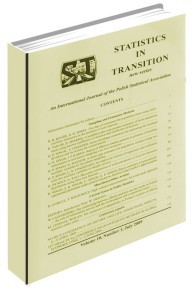Income Inequality and Income Stratification in Poland
Income Inequality and Income Stratification in Poland
Author(s): Alina JędrzejczakSubject(s): Economy
Published by: Główny Urząd Statystyczny
Keywords: income distribution;income inequality
Summary/Abstract: Income inequality refers to the degree of income differences among various individuals or segments of a population. When the population has been partitioned into subgroups, according to some criterion, one common application of inequality measures is evaluation of the relationship between inequality in the whole population and inequality in its constituent subgroups in order to work out the within and the between subgroups contributions to the overall inequality. In the paper selected decomposition methods of the well-known Gini concentration ratio were discussed and applied to the analysis of income distribution in Poland. The aim of the analysis was to verify to what extent the inequality in different subpopulations contributes to the overall income inequality in Poland and to what extent their members form distinct segments or strata. To provide the decomposition of the Gini index the population of households was partitioned into several socio-economic groups on the basis of the exclusive or primary source of maintenance. Moreover, the households were divided by economic regions using the Eurostat classification units NUTS 1 as well as by family type defined by the number of children.
Journal: Statistics in Transition. New Series
- Issue Year: 15/2014
- Issue No: 2
- Page Range: 269-282
- Page Count: 14
- Language: English

